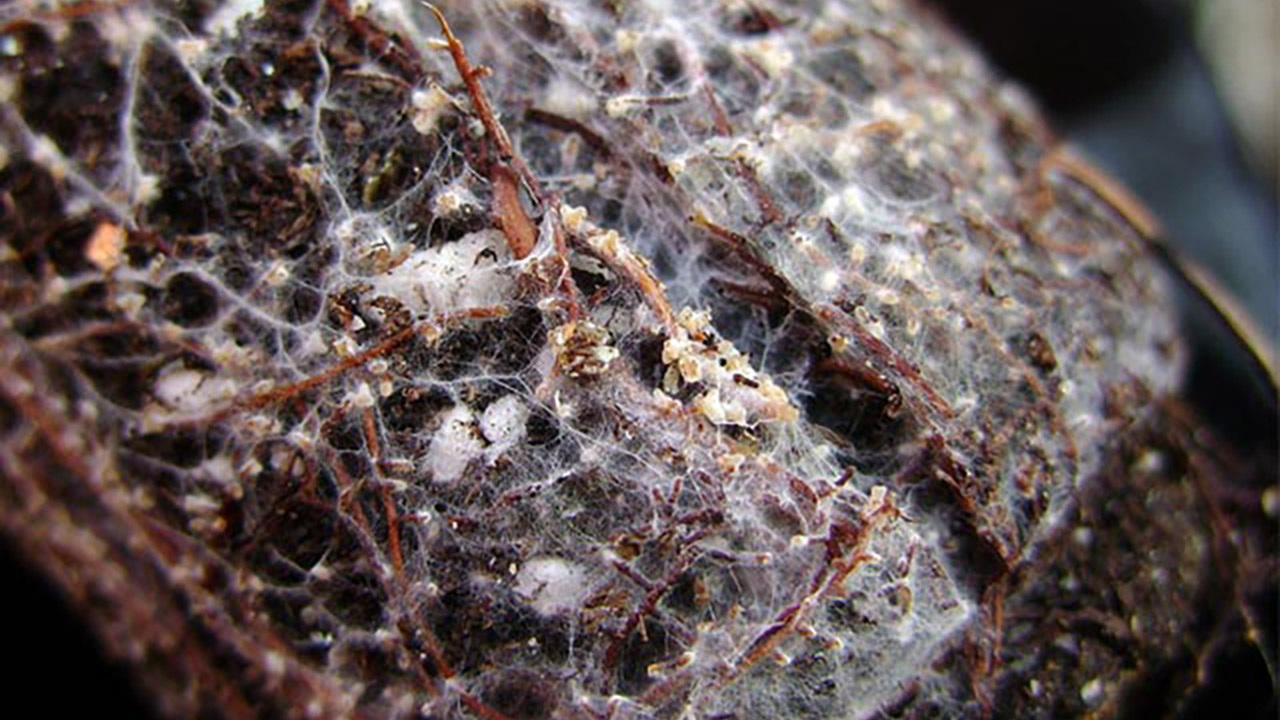Science For Growers: Mycorrhiza Has A Power To Solve A Lot Of Your Problems
A long history of symbiosis between plants' roots and arbuscular fungi (Glomales, Zygomycetes), known as mycorrhiza (pl. mycorrhizae), has been dated by mycologists as far back as 460 mln years to Ordovician period. Fossils analysed by scientists strongly resemble these of today, and this in turn supports hypothesis, that mycorrhiza played crucial role in facilitating the colonization of land by the plants.
In overall, scientists estimate that around 80-90% of the land plants use mycorrhiza (which is the name of mutual relatonship not the species of fungus itself) to survive and thrive.
In contrast to rhizobial nodule bacteria, which fix nitrogen from the atmosphere turning it into ammonia – a phenomenon associated with legumes such as green beans or peas – mycorrhizae enhance MAINLY phosphorus uptake by the root system, which is quite common in some glacial rock deposits, but in many parts of the world occurs only in low concentrations.

Mycorrhizae have been proven beyond any doubt in the last two decades of research to improve efficiency of nutrients uptake in plants, and to increase their resistance to pathogens or various types of abiotic stress (like heavy wind, drought or waterlogged soil).
Mycorrhiza broadly speaking boosts plant's growth, vigour and pest/mould resistance as well, which is crucial for a cannabis farmer, who wants to keep it clean and organic by spraying as little as possible or is looking to reduce his fertiliser overhead.
This is made possible, cause mycorrhiza greatly reduces the need for phosphates, produced mainly by turning raw mineral (rock phosphate) into a powder, which is unsustainable practice with huge carbon footprint and damaging after effects, that are becoming a serious hazard for the world ecosystem.
Arbuscular mycorrhiza forms so called „hyphal network” in soil, where extraradical mycelium (the vegetative part of a fungus) contributes to expanding the root surface to such an extent, that it becomes like a sponge, which is a good metaphor for what it does.
In exchange plants feed it photosynthetic products called exudates, which are carbon-based molecules secreted through the roots. They provide energy for the fungus to grow, which then gives back to the plant, so it becomes a closed loop.
Mycorrhizal apparatus can be very extensive, and very effective in absorbing phosphorus, which as you should remember is one of the most immobile nutrients in soil, so the plant needs to delegate a lot of its energy in order to extract it. Another big problem is that only a tiny portion of this nutrient is readily bio-available and soluble, and mycorrhiza largely improves its solubility.

But there are more well-researched benefits like alleviating drought stress, which is a rather burning issue in hot/dry climates (think California or Italy). Here mycorrhiza really shines as it has an ability to go looking for water deep in soil, and it can also store it, which sometimes can make a difference between life and death.
However, growing weed with mycorrhiza has to be done within a certain framework as studies have clearly shown that the relationship between the plant's root and the fungal hyphae flourishes when phosphorus levels in soil remain low!
This is the conclusion we find in Mycorrhiza and soil phosphorus levels by Curtis E. Swift, Ph.D. from Colorado State University, who writes in his paper:
When the soil level of bicarbonate-soluble phosphorus exceeded 140 mg kg -1 (140 parts per million) the rate of infection was found to decrease (Amijee et al. 1989). Abbott and Robson (1977 & 1978) found the mycorrhizae Glomus fasciculatum ceased to be effective when the soil level of phosphorus reached 133 mg kg -1 [133 parts per million (ppm)].
Schubert and Hayman (1986) found mycorrhizae was no longer effective when 100 mg or more of P was added per kilogram of soil (100 ppm). Mycorrhizal infection virtually disappeared with the addition of 1.5 grams or more of mono calcium phosphate per kilogram of soil (Mosse 1973).

The development of mycorrhizal relationships were found to be the greatest when soil phosphorus levels were at 50 mg kg -1 (50 ppm).
So remember that adding some spores in powder to your soil or even rolling your seeds in them is a fantastic idea, but you need to cut back on your P fertilisers first in order to have a full benefit! And keep it organic!
Photo credit: First one from the top is East Coast Sour Diesel Haze (Connoisseur Genetics) by CareStaker. Second from the top is Golden Tiger (Ace Seeds) by Weaselcracker. Third one from the top is Grape Ape by Doc Bud. All pics courtesy of 420Magazine
Very interesting stuff! Keep it going :D
Thx, man. Feedback is very important to me at this stage, especially from cannabis community to which this series is addressed in the first place... HST fans included :)
👍🌱🌳
Thx for dropping by, man. I'm afraid it might be one of my last comments today, cause my bandwidth is running on fumes. BTW I've just found out it's something to be treated with care and I spent it on comments and upvotes instead :)
Yeah it’s best to do at the most 11 upvotes a day
It came back magically after I posted, so I'm golden again :)
This post has received a 1.08% upvote from thanks to: @conradino23.
thanks to: @conradino23.
For more information, click here!!!!
Send minimum 0.050 SBD/STEEM to bid for votes.
Do you know, you can also earn daily passive income simply by delegating your Steem Power to @minnowhelper by clicking following links: 10SP, 100SP, 500SP, 1000SP or Another amount